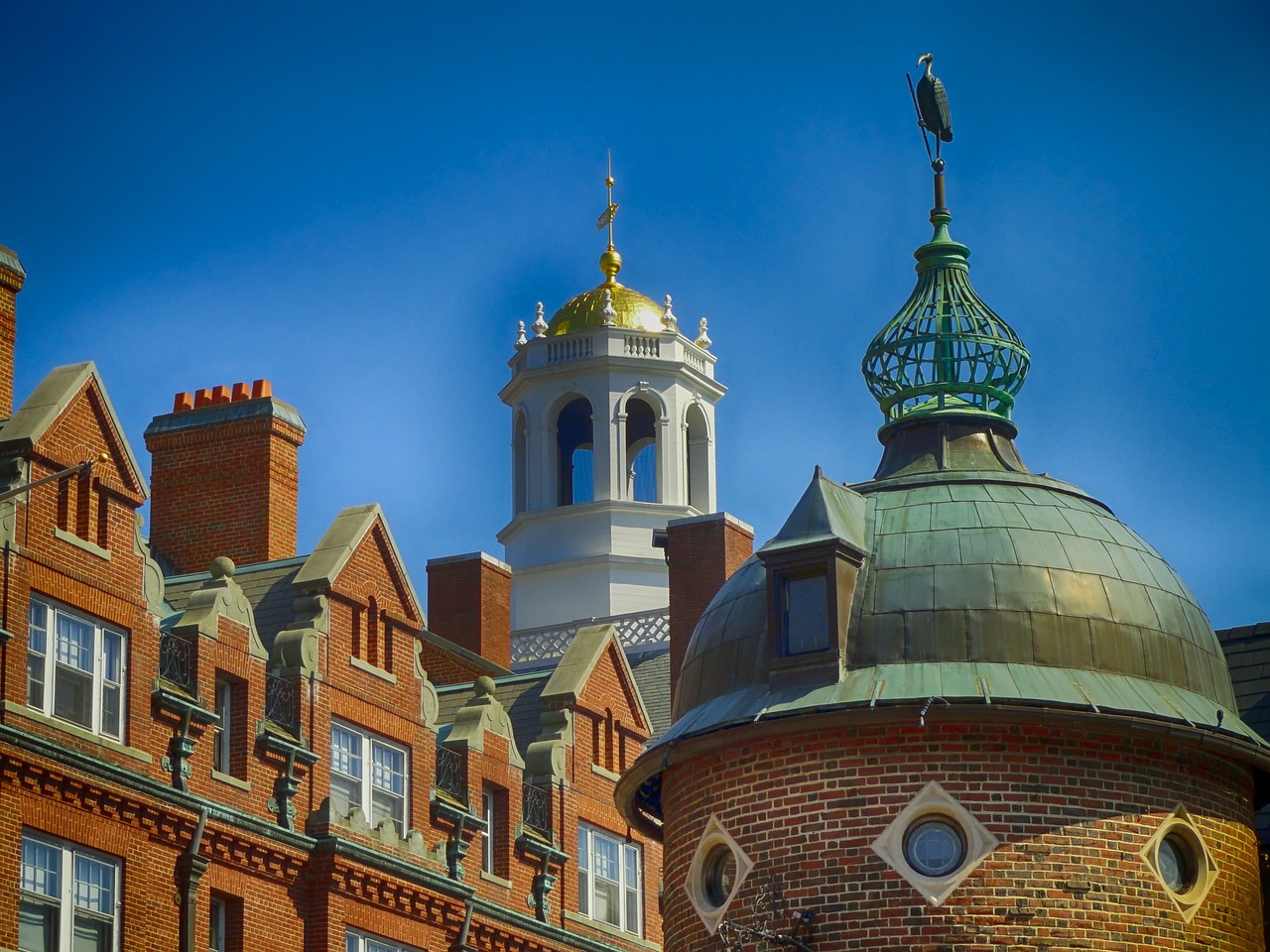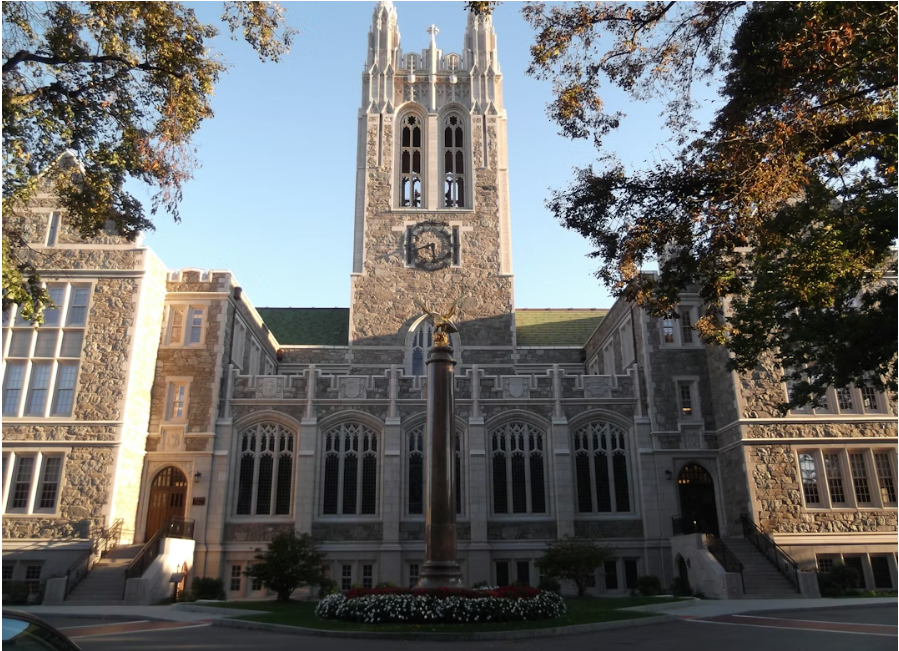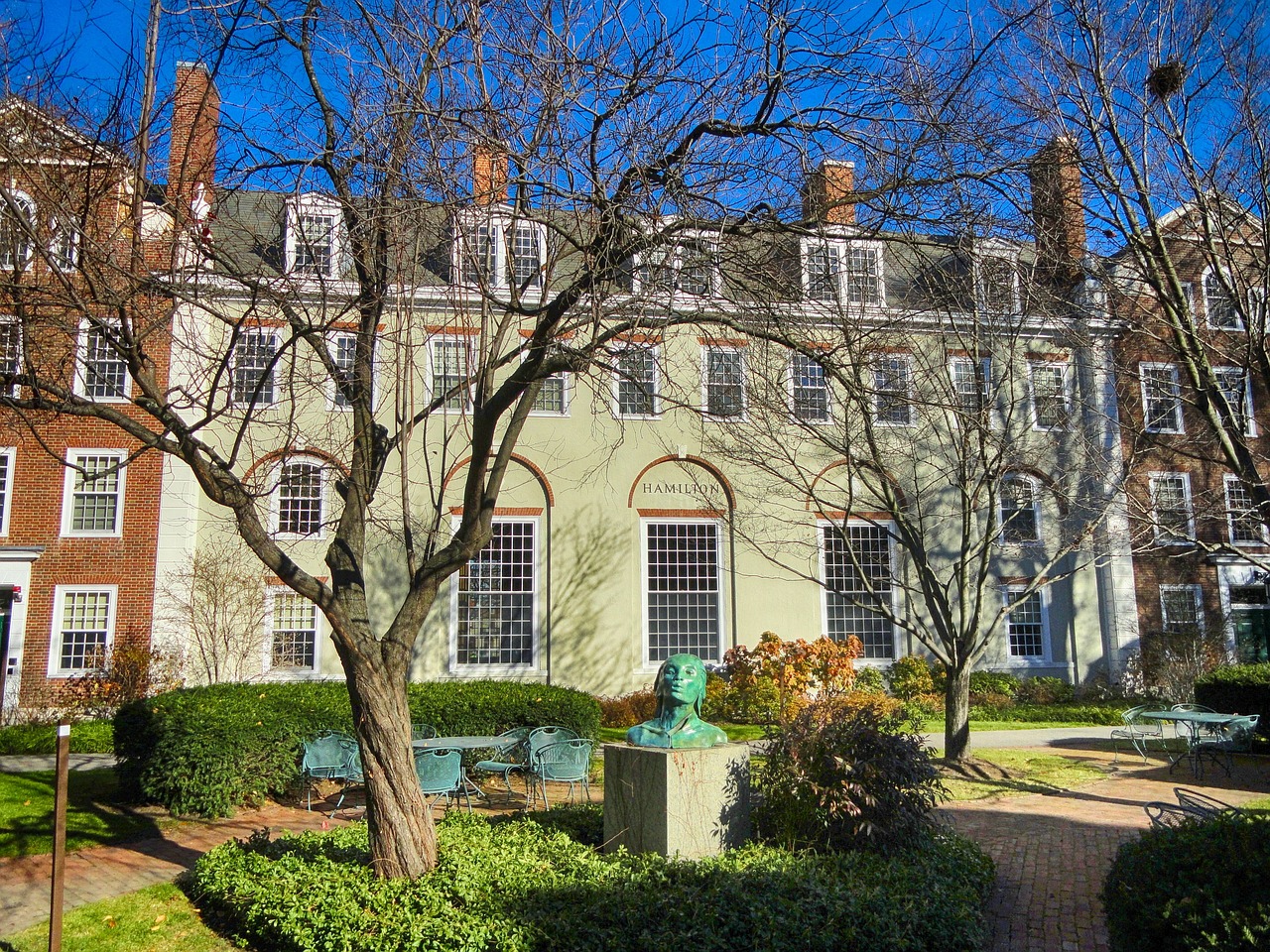Harvard University, as one of the most prestigious institutions of higher learning in the world, attracts tens of thousands of students with dreams of applying to this temple of knowledge. However, Harvard University acceptance rate has been decreasing over the years, making it more difficult to get into the University. From the admission data in recent years, we can not only see the increasing number of applicants, but also feel the increasingly stringent admission standards. Whether international or local, successful admission requires academic excellence, outstanding extracurricular activities, and a strong personal statement. This article will delve into the trends, influencing factors and admission requirements of Harvard University admissions rate to provide all-round reference and guidance for you, and help you make complete preparation for your application.
Harvard Acceptance Rate Trends
Recent Harvard Acceptance Rate Data
| Recent Harvard University Acceptance Rate Data | |
|---|---|
| Year | Harvard Acceptance Rate |
| 2000 | 20% – 25% |
| 2010 | ~6.2% |
| 2021 | ~3.4% |
| 2022 | ~3.2% |
| 2023 | ~3.4% |
| 2024 | ~3.6% |
Standing as one of the world’s top universities, Harvard admission rate has long been concerned. Twenty years ago, Harvard’s acceptance rate ranged between 20-25%. However, data from the recent years show that Harvard acceptance rate has shown a downward trend year over year, around 3-5%, and the Harvard acceptance rate 2023 has dropped to 3.4%, making it one of the most selective universities globally. While in 2024, the acceptance rate at Harvard had a slight increase to 3.6%. But from 2021 to 2024, the admission rates are all around 3.5%. The phenomenon reflects the increasing degree of competition, but also closely related to the increase in the number of applications worldwide.
Factors Influencing Harvard Acceptance Rates
1. Increase in applications: The number of students applying to Harvard each year continues to increase, reaching an all-time high of 54,008 in 2024.
2. Enrollment limits: Despite the increase in applications, Harvard’s enrollment has remained largely stable, at about 1,900 to 2,000.
3. The implementation of diversity policy: Harvard University pays attention to balancing diversity in the admission process, including race, gender, cultural background, etc., which also affects the admission rate.
4. Competition between academic and extracurricular activities: Admitted students often excel in academic performance, extracurricular activities and leadership, which further increases the difficulty of application.
Harvard Acceptance Rates by Class
| Harvard University Acceptance Rate by Class | |||
|---|---|---|---|
| Class | Applicants | Admitted Students | Acceptance Rate |
| Class of 2024 | 40,248 | 1,980 | 4.92% |
| Class of 2025 | 57,435 | 1,968 | 3.43% |
| Class of 2026 | 61,220 | 1,954 | 3.19% |
| Class of 2027 | 56,937 | 1,942 | 3.41% |
| Class of 2028 | 54,008 | 1,970 | 3.65% |
For the Class of 2024, the Harvard acceptance rate was 4.92%. Among 40,248 applicants, only 1,980 students were admitted. Those admitted students are from 50 states and 94 countries, there are over 50% among the students have minority backgrounds.
The acceptance rate of Harvard University Class of 2025 reached to 3.43%, which was a decline from the previous year. However, the number of applicants has rised around 42.7%, totally 57,435 applicants.
For the Class of 2026, the Harvard’s acceptance rate saw a shift, dropping to a recent-5-year low of 3.19%. In this cycle, 61,220 students applied, which reached the top number of the applications in recent 5 year, however, only 1,954 were accepted.
For the Class of 2027 and Class of 2028, the acceptance rate at Harvard University were 3.41% and 3.65%, separately, which were slightly increased. While, comparing to the Class of 2026, the total applications of Class of 2027 and 2028 has declined to 56,937 and 54,008, and the Harvard application rate has declined to around 7% and 12%.
Harvard Early Acceptance Rate
What is Harvard Early Acceptance Rate?
Harvard University does not have a traditional Early Decision program, so there is no Harvard early decision acceptance rate. Instead, Harvard offers a Restrictive Early Action option which also called REA option. It is important to note that the Harvard Early acceptance rate is significantly higher than the Regular Decision acceptance rate, making the Early Action route an appealing option for many applicants.
Recent Harvard Early Acceptance Rate Data
| Harvard Early Action Acceptance Rate | |||
|---|---|---|---|
| Class | Early Applications Accepted | Early Applications Received | Early Acceptance Rate |
| Class of 2019 | 977 | 5,919 | 16.51% |
| Class of 2020 | 918 | 6,173 | 14.87% |
| Class of 2021 | 938 | 6,473 | 14.49% |
| Class of 2022 | 964 | 6,630 | 14.54% |
| Class of 2023 | 935 | 6,958 | 13.44% |
| Class of 2024 | 895 | 6,424 | 13.90% |
| Class of 2025 | 747 | 10,086 | 7.41% |
| Class of 2026 | 740 | 9,406 | 7.87% |
| Class of 2027 | 722 | 9,553 | 7.56% |
| Class of 2028 | 692 | 7,921 | 8.74% |
According to the above Harvard early acceptance rate statistics, we can figure out that from the Class of 2019 to the Class of 2028, the total early acceptance rate at Harvard University is decreasing to 7%-8%, yet, it still much higher than the overall Harvard’s acceptance rate which is around 3.5%.
There are 7,921 applications during Early Action of Harvard Class of 2028, with 692 accepted, and the early acceptance rate is 8.74%. It is much higher than that of the Class of 2027. However, the Early Action pool has a large decrease between the Class of 2027 and 2028, from 9,553 to 7,921, down 17%.
During the previous years, Harvard has admitted approximately one-third of the class via Restrictive Early Action. Although REA applicants typically enjoy an acceptance rate nearly double that of the regular application, it is still extremely low under the large number of applications. Besides, according to the requirements, if you choose to apply Harvard University Restrictive Early Action option, you cannot apply early action to any other private institutions. While Harvard’s Early Action acceptance rate is relatively higher than its Regular Decision rate, it remains highly competitive, reflecting the university’s commitment to selecting a diverse and academically exceptional student body. So, only if Harvard is your first choice and you have the strong and qualified academic backgrounds, Harvard Restrictive Early Action option is your great choice on application.
Regular Decision Harvard University Acceptance Rate
Recent Regular Decision Harvard University Acceptance Rate
| Harvard University Regular Decision Acceptance Rate | |||
|---|---|---|---|
| Class | Regular Decision Applications Accepted | Regular Decision Application Received | Regular Decision Acceptance Rate |
| Class of 2019 | 1,013 | 31,386 | 3.23% |
| Class of 2020 | 1,119 | 32,868 | 3.40% |
| Class of 2021 | 1,118 | 33,033 | 3.38% |
| Class of 2022 | 998 | 36,119 | 2.76% |
| Class of 2023 | 1,015 | 36,372 | 2.79% |
| Class of 2024 | 1,085 | 33,824 | 3.21% |
| Class of 2025 | 1,221 | 47,349 | 2.58% |
| Class of 2026 | 1,214 | 51,814 | 2.34% |
| Class of 2027 | 1,220 | 47,384 | 2.57% |
| Class of 2028 | 1,245 | 46,087 | 2.70% |
By reading the statistics of regular decision Harvard’s acceptance rate, we can discover that the admission rate at Harvard in the regular application round is very low, which is around 3% to 2.3%.
The Overall Harvard University acceptance rate of Class of 2028 is 3.65%, and the Harvard regular decision acceptance rate is 2.7%. For the Class of 2028, there are totally 46,087 applications via the regular round, yet only 1,245 got the offer from Harvard University during the Regular Decision application.
Beside, for the Class of 2026, there are 51,814 applicants choose regular decision option, while only 1,214 students received Harvard University offer, and the regular decision acceptance rate at Harvard University in that year reached the lowest point, 2.34%.
The notably low regular decision acceptance rate at Harvard reflects the highly competitive nature of its admission process, meaning that applicants need to present exceptional academic records, strong extracurricular involvement, and compelling personal essays to excel in the competitive applicant pool.
Harvard Acceptance Rate of International Students
| Harvard College Acceptance Rate for Interantional Freshmen | |
|---|---|
| Class | Percentage of International Freshmen |
| Class of 2023 | 13.10% |
| Class of 2024 | 11.80% |
| Class of 2025 | 12.20% |
| Class of 2026 | 15.30% |
| Class of 2027 | 15.60% |
| Class of 2028 | 18.00% |
From the above data, we can discover that the number of international students in Harvard’s Class of 2028 enrollment increased for the fourth year in a row, with demographics showing a 52% increase compared to the Class of 2024.
According to data released by Harvard University, the percentage of international students admitted each year has steadily increased, from 11.8% in the Class of 2024 to 15.6% in the Class of 2027, and getting a large increase to 18% in the Class of 2028. For the fourth year in a row, the proportion of international students at Harvard has continued to rise, reflecting the university’s ongoing efforts to strengthen global recruitment. This trend clearly shows that Harvard attaches great importance to multiculturalism and international exchange, providing students with a broader international perspective and exchange platform.

Entry Requirements for Harvard University
1. Academic Requirements: Harvard University requires applicants to demonstrate academic excellence, including:
1) High school grades, especially in AP or IB courses.
2) SAT or ACT scores, although in recent years SAT or ACT scores are not required, excellent standardized test scores are still an important factor to consider.
3) Students who are in the top 1%-2% of their class rank are more competitive.
2. Extracurricular Activities and Leadership: Harvard emphasizes the all-round development of students, especially the depth and uniqueness of extra-curricular activities. Excellence in leadership, community service, academic research or artistic talent can significantly improve admission.
3. Letters of Recommendation and Personal Statement:
1) Letters of Recommendation: Letters of recommendation from faculty and external advisors that reflect the student’s academic abilities and personal qualities.
2) Personal Statement: Applicants are required to use their personal statement to demonstrate their unique story, goals, and fit with Harvard.
4. Special Requirements for International Students:
1) International students are required to provide a TOEFL or IELTS score to demonstrate the English language proficiency.
2) In addition, the application of international students should highlight the advantages of the cross-cultural background and the potential to contribute to Harvard’s diverse culture.
How Can uhomes.com Help You?
In addition to provide you the Harvard acceptance rate with comprehensive guidences and deeply insights, uhomes.com, as your valuable resource of finding student housing near the universities or in the cities. If you have decided on the university and received the offer, you can directly contact us to explore your dream Harvard housing. By browsing our listings, you will have a wide range of options with various room types, and upscale amenities, as well as safe, vibrant and convenient surroundings.
Final Thoughts on Harvard Acceptance Rate
Harvard University admissions process is known for its rigor and competitive nature. Whether the overall Harvard’s acceptance rate, the Harvard early action acceptance rate or regular decision Harvard acceptance rate, they all indicate the difficulty of getting into Harvard and the high requirements for the many qualities of applicants. For students planning to apply to Harvard University, in-depth knowledge of admission trends and admission requirements is the first step to success, while meeting the challenge with thorough preparation and clear goals.
FAQs on Harvard University Acceptance Rate
What is the acceptance rate for Harvard?
Harvard University acceptance rate in recent five years is around 3.5%. The latest statistics for the Harvard acceptance rate of the Class of 2028 is 3.65%.
What is Harvard University acceptance rate by major?
Harvard does not public acceptance rates by major, as when Harvard admiting students, it assesses the overall fit between the student and Harvard University, whether there is potential to thrive and contribute to the university, as well as their strong passion and potential for the major, rather than admitting students based on the specific number of vacancies in each major.
How many people apply to Harvard?
Annually, there are tens of thousands of students apply for Harvard University. The Harvard admissions team received 61,220 undergraduate applicants for the Class of 2026, which is the highest number of the appliants in recent 5 years. For the latest Class of 2028, Harvard University received 54,008 applications.
What GPA do I need to get into Harvard University?
To have the best shot of receiving the offer from Harvard University, you should have a 4.2 GPA or even higher. Meanwhile, for the SAT/ACT, you’d better get at least 75% of the total points, with at least a 1580 SAT score or a 36 ACT score.
Is it harder for international students to get into Harvard University?
Yes, it is harder for international students to get into Harvard University. There is only around 10%-15% of the freshman class are international students. Considering the very low total acceptance rate at Harvard, 3.5%, the admission rate for international students is much lower. Furthermore, the number of international students applying to Harvard University is extremely large, making the competition very fierce. Therefore, it has become very difficult to stand out and obtain the few available international places.
Is 1500 SAT good for applying Harvard University?
1500 SAT score is a high score but it is not a very good score for Harvard. Harvard’s average accepted SAT score is around 1550, so a 1500 score can not guarantee admission to Harvard University. Meanwhile, given the extremely large number of applicants for Harvard, achieving a SAT score of at least 1580 would be more secure








